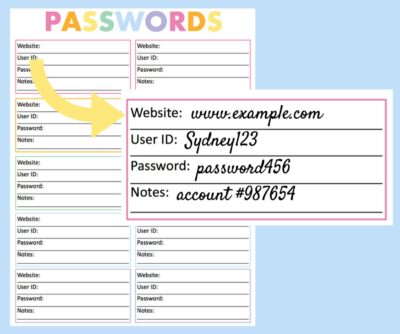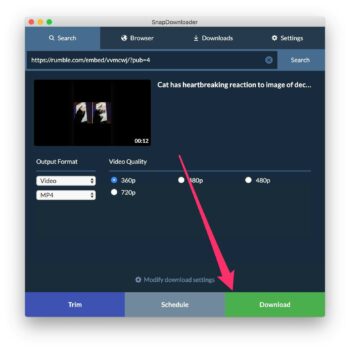In the realm of digital communication, harnessing the power of visual elements is more crucial than ever. Microsoft Teams, a leading collaboration platform, recognizes this significance and empowers users to engage in Visual Conversations, redefining the way teams communicate and collaborate.
Here's a closer look at the profound impact of integrating images into your Teams conversations:
- Enhanced Expression: Visuals allow team members to express ideas and emotions more vividly. Whether it's conveying enthusiasm, sharing concepts, or expressing concern, images bring an added layer of expression to textual communication.
- Efficient Information Transfer: A picture is worth a thousand words. By incorporating images, complex information can be conveyed swiftly and clearly. This accelerates understanding and reduces the likelihood of miscommunication.
- Increased Engagement: Visuals capture attention more effectively than text alone. By incorporating images, Teams chats become more engaging, holding the interest of participants and fostering a lively, collaborative environment.
Let's delve into some specific details on how the power of visual conversations manifests in Microsoft Teams:
| Feature | Description |
|---|---|
| Image Sharing | Teams facilitates seamless image sharing within the chat interface. Users can upload and share images directly from their devices, ensuring a quick and straightforward process. |
| Emojis and GIFs | Emojis and GIFs add a touch of fun and expressiveness to conversations. Microsoft Teams provides an array of these visual elements to enhance communication and lighten the atmosphere. |
| Markup and Annotation | Teams allows users to mark up images and annotate directly within the platform. This feature is particularly valuable for collaborative projects that involve visual feedback and adjustments. |
Embracing the power of visual conversations in Microsoft Teams not only revolutionizes the way teams communicate but also fosters a more inclusive and engaging collaborative environment. Stay tuned as we explore the practical aspects of sending images in Teams chat in the next section.
How to Send Images in Microsoft Teams
Sending images in Microsoft Teams is a straightforward process that adds a visual dimension to your conversations. Whether you're sharing project updates, collaborating on design concepts, or simply adding a touch of creativity, incorporating images enhances the overall communication experience. Here's a step-by-step guide to seamlessly send images in Teams:
- Open the Chat: Begin by opening the chat window in Microsoft Teams where you want to send the image. This can be a one-on-one conversation or a group chat.
- Click on the Image Icon: Look for the image icon within the chat interface. This icon is typically represented by a mountain and sun symbol.
- Choose Your Image: Clicking on the image icon will prompt you to select the image you want to send. Navigate to the location on your device where the image is stored and select it.
- Add a Message (Optional): You can add a contextual message along with the image to provide additional information or context. Simply type your message in the chat window.
- Send the Image: Once you've selected the image and added any optional messages, click the "Send" button to share the image with your team members.
Microsoft Teams offers additional features to enhance the image-sharing experience:
- Image Preview: Before sending, Teams provides a preview of the image to ensure it's the correct file. This helps in avoiding any accidental or incorrect image sharing.
- Supported Image Formats: Teams supports various image formats, including JPEG, PNG, and GIF. Ensure your image is in a supported format for seamless sharing.
Furthermore, Teams allows users to drag and drop images directly into the chat window, providing an alternative method for image sharing.
| Tip | Description |
|---|---|
| Quick Access Toolbar: | Consider customizing your Quick Access Toolbar to include the image icon for faster and more convenient access to image-sharing features. |
Now that you've mastered the art of sending images in Microsoft Teams, let's explore how these visual elements contribute to enhanced collaboration within the platform in the upcoming sections.
Also Read This: Does Getty Images Accept iPhone Photos? Guidelines for Mobile Photography Submissions
Enhancing Collaboration with Visual Content
Visual content plays a pivotal role in fostering collaboration within Microsoft Teams. Beyond mere aesthetics, incorporating images into your collaborative efforts contributes to a richer and more effective communication experience. Let's explore how visual content enhances collaboration in Teams:
- Clarity and Understanding: Visuals transcend language barriers and provide a universal language for conveying ideas. By incorporating images into discussions, teams can ensure a clearer understanding of concepts, reducing the risk of misinterpretation.
- Engagement and Participation: Visual content captivates attention and stimulates engagement. Teams that leverage images in their communications often experience increased participation and a more vibrant collaborative atmosphere.
- Project Visualization: For projects involving design, architecture, or any visual components, incorporating images allows team members to visualize the end product. This aids in decision-making and ensures alignment on project goals.
Microsoft Teams offers various features that amplify the impact of visual content in collaboration:
- Integrated Editing Tools: Teams provides built-in editing tools for images, allowing team members to mark up and annotate images directly within the platform. This feature streamlines collaborative projects that require visual feedback.
- Accessibility: Visual content enhances accessibility by providing an alternative means of communication. Teams of users with different learning preferences or accessibility needs can benefit from the inclusivity of visual elements.
Moreover, incorporating visual content into collaborative endeavors in Microsoft Teams doesn't stop at images. Teams support the use of emojis and GIFs, adding a touch of personality and expression to conversations.
| Tip | Description |
|---|---|
| Establish Visual Communication Guidelines: | Consider establishing guidelines for the use of visual content in your Teams workspace to ensure consistency and effectiveness in communication. |
As we continue our exploration of visual conversations, the next section will delve into best practices for optimizing the sharing of images in Microsoft Teams.
Also Read This: Alibaba Alliance: Connecting Alibaba to Etsy for Business Growth
Best Practices for Image Sharing
While sending images in Microsoft Teams is a seamless process, adopting best practices enhances the overall experience for both senders and recipients. Consider the following tips to optimize image sharing and ensure effective communication within your Teams workspace:
- Choose Appropriate Image Formats: Opt for image formats such as JPEG, PNG, or GIF, which are widely supported in Microsoft Teams. Choosing the right format ensures that your images display correctly and maintain quality.
- Optimize Image Size: Resize images to an appropriate resolution before sharing to prevent unnecessarily large file sizes. This not only facilitates faster uploads but also ensures a smoother experience for recipients with varying internet speeds.
- Provide Context: When sending images, include a brief message to provide context or highlight key points. Adding context ensures that recipients understand the purpose of the image and promotes effective communication.
- Utilize Markup and Annotation: Take advantage of Teams' built-in editing tools to markup and annotate images directly within the platform. This is particularly useful for collaborative projects that require visual feedback and adjustments.
Teams also offers additional features that can enhance the image-sharing experience:
- Image Preview: Before sending, Teams provides a preview of the image to confirm its content. This feature helps in avoiding any accidental or incorrect image sharing.
- Drag and Drop: Simplify the image-sharing process by dragging and dropping images directly into the chat window. This method offers a quick and convenient alternative to using the image icon.
Considering these best practices not only streamlines the image-sharing process but also contributes to a more efficient and organized collaboration within Microsoft Teams. Embrace these guidelines to make visual communication a powerful asset in your team's toolkit.
| Tip | Description |
|---|---|
| Regularly Review Image Content: | Periodically review and organize image content within Teams to maintain a clutter-free and efficient workspace. |
As we navigate the nuances of image sharing, the next section addresses common challenges and provides solutions for a smoother visual communication experience in Microsoft Teams.
Also Read This: The Future of Youtube: Emerging Trends and Opportunities for Content Creators
Overcoming Challenges
While the integration of visual elements in Microsoft Teams enhances communication, users may encounter occasional challenges when sending and receiving images. Understanding and addressing these challenges is key to maintaining a seamless visual communication experience. Let's explore common challenges and their solutions:
- File Size Limitations: Teams imposes file size limitations for image uploads. Ensure that your images comply with the specified size limits to prevent any issues during the uploading process.
- Image Rendering Issues: In some cases, recipients may experience difficulties in rendering images. To mitigate this, stick to widely supported image formats like JPEG, PNG, or GIF, and verify that the recipient's software is up-to-date.
- Slow Uploads: Slow internet connections can lead to delays in image uploads. Optimize image sizes, and consider alternative methods like compressing images or using cloud storage links if upload speed is a persistent issue.
Additionally, Microsoft Teams provides features and options to address these challenges:
- File Size Indicator: Teams often displays a file size indicator during the image selection process. Pay attention to this indicator to ensure that your image falls within the acceptable size range.
- Alternative Sharing Methods: If encountering persistent challenges, consider using alternative methods such as sharing images through cloud storage links. Teams allows users to include links to external content for a smoother sharing experience.
Understanding and proactively addressing these challenges contributes to a more reliable and effective use of visual elements in Microsoft Teams. By incorporating these solutions into your workflow, you can ensure that visual communication remains a powerful tool for collaboration.
| Tip | Description |
|---|---|
| Regular Software Updates: | Ensure that both the sender's and recipient's Teams software is regularly updated to access the latest features and improvements. |
As we navigate the nuances of visual communication challenges, the final section provides a comprehensive overview and addresses frequently asked questions related to sending images in Microsoft Teams.
Also Read This: List of Top Linkedin Companies in 2023
FAQ
Explore the answers to frequently asked questions about sending images in Microsoft Teams for a more informed and efficient visual communication experience:
-
Q: What image formats are supported in Microsoft Teams?
A: Microsoft Teams supports widely used image formats such as JPEG, PNG, and GIF. Ensure your images are in one of these formats for seamless sharing.
-
Q: Are there file size limitations for image uploads in Teams?
A: Yes, Teams imposes file size limitations for image uploads. Keep an eye on the file size indicator during the image selection process to ensure compliance with the specified limits.
-
Q: How can I address slow image uploads in Teams?
A: Optimize image sizes to prevent slow uploads. If slow internet is a persistent issue, consider alternative methods such as compressing images or using cloud storage links.
-
Q: Can I annotate or mark up images within Teams?
A: Yes, Microsoft Teams provides built-in editing tools that allow users to annotate and mark up images directly within the platform, facilitating collaborative projects that require visual feedback.
-
Q: What should I do if recipients experience issues rendering images?
A: Stick to widely supported image formats, and ensure that both the sender's and recipient's software is up-to-date. This helps mitigate rendering issues.
-
Q: Is there an alternative method for sharing images in Teams?
A: Yes, if encountering challenges, consider using alternative methods such as sharing images through cloud storage links. Teams allows users to include links to external content for a smoother sharing experience.
Stay informed and make the most out of visual conversations in Microsoft Teams by referring to these frequently asked questions and their solutions.
Conclusion
Visual conversations have emerged as a cornerstone of effective communication within Microsoft Teams, transforming the way teams collaborate and connect. As we conclude this exploration into sending images in Teams chat, it's evident that the integration of visual elements enriches the collaborative experience, fostering clearer communication and heightened engagement.
From the seamless process of sending images to the power of visual content in enhancing collaboration, we've uncovered the diverse facets of incorporating visuals into your Teams conversations. The journey from understanding best practices for image sharing to overcoming common challenges has equipped you with the tools to make visual communication a potent asset in your teamwork arsenal.
As you continue your endeavors in Microsoft Teams, remember to leverage the features discussed, such as image annotations, markup tools, and alternative sharing methods, to tailor your visual communication to the unique needs of your projects and teams. Regularly exploring updates and staying informed about best practices will ensure that your visual conversations remain efficient and impactful.
Embrace the power of images, emojis, and GIFs to not only express ideas but also to create a collaborative environment that thrives on creativity and engagement. Visual conversations are not just about what you see; they're about how you connect and communicate in a digital landscape.
Thank you for joining us on this journey into the world of visual conversations in Microsoft Teams. May your future collaborations be vibrant, efficient, and visually compelling!














